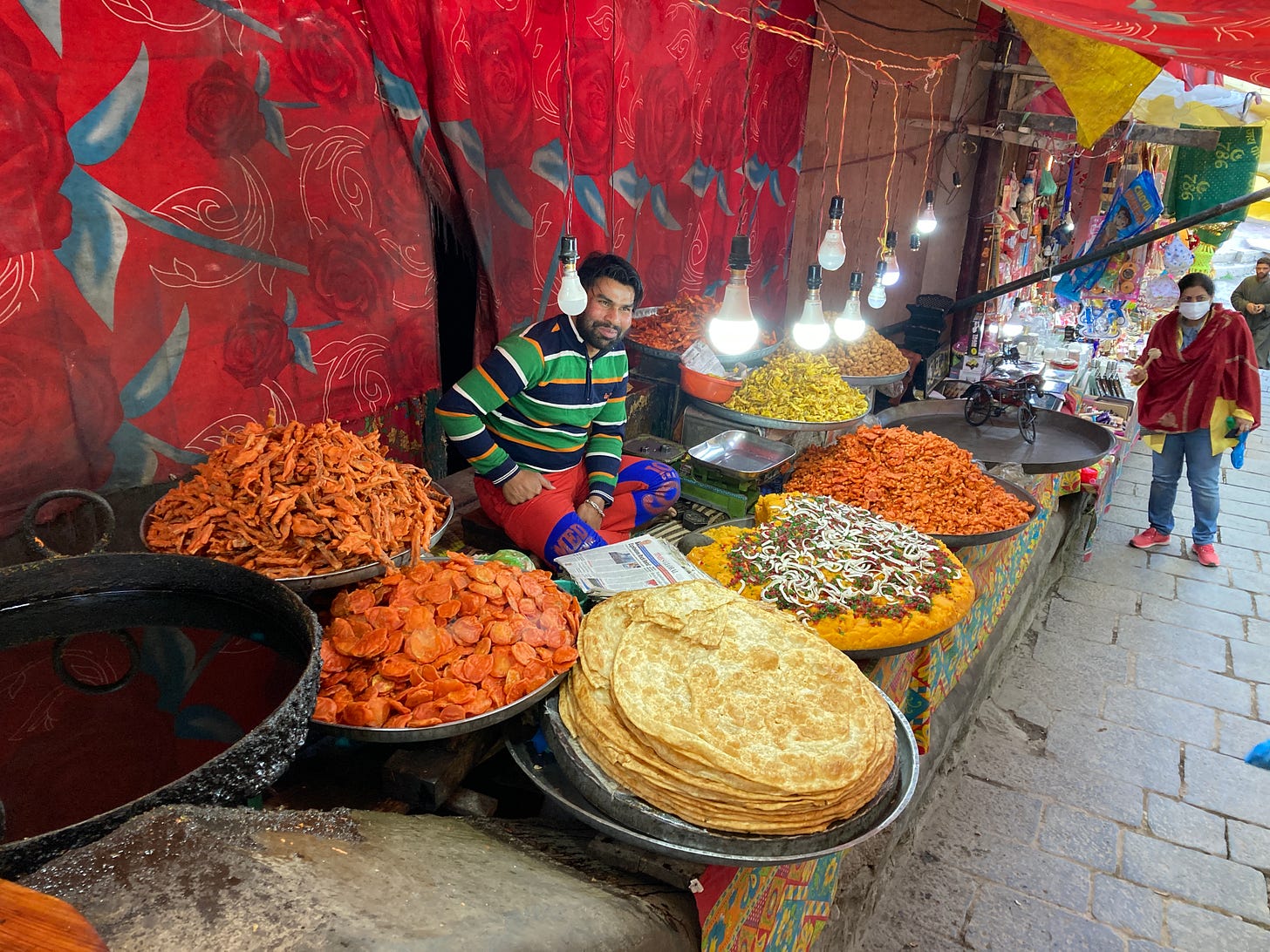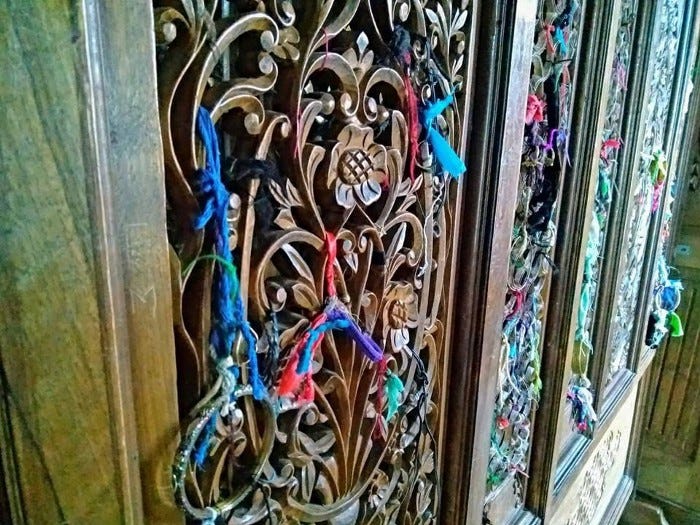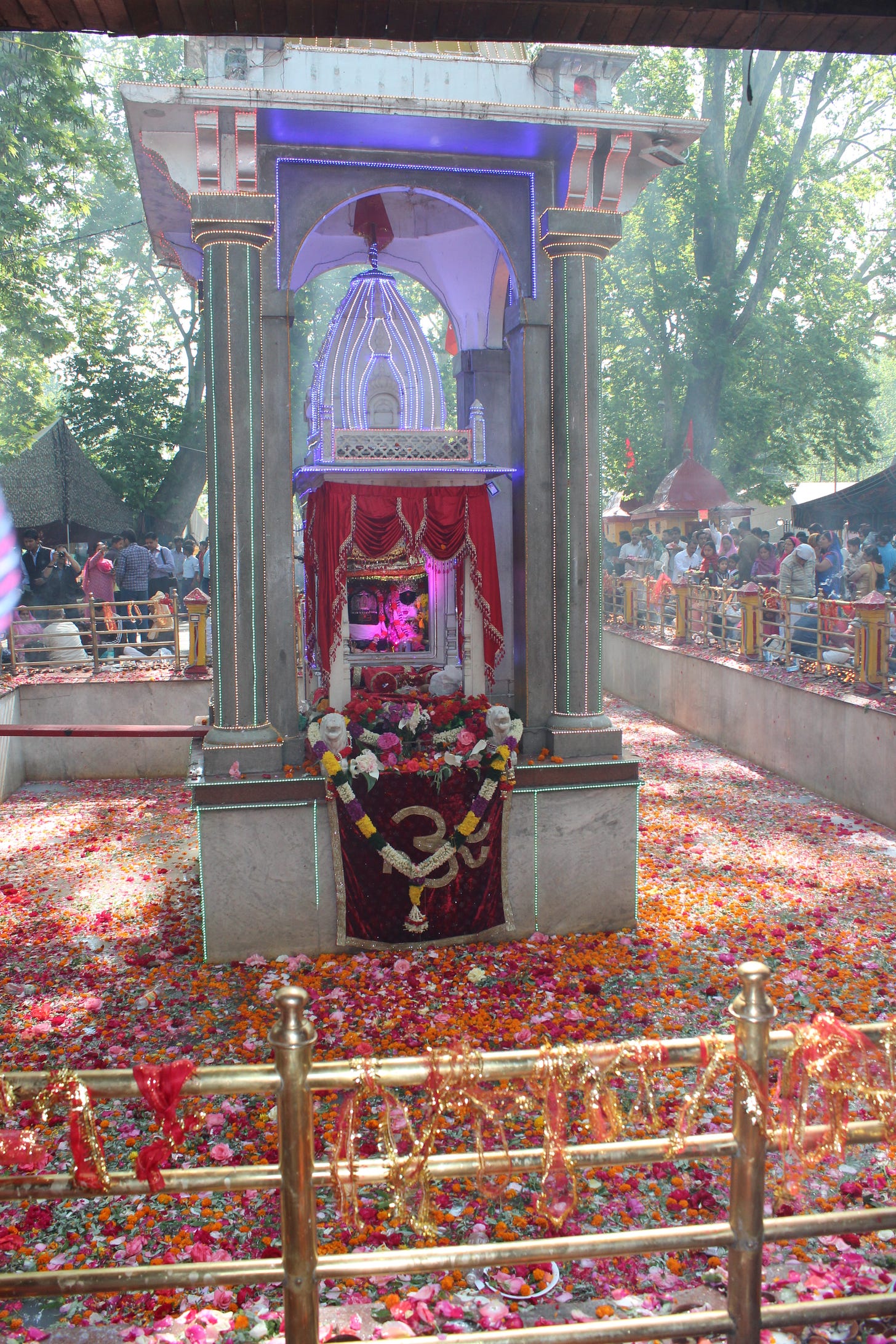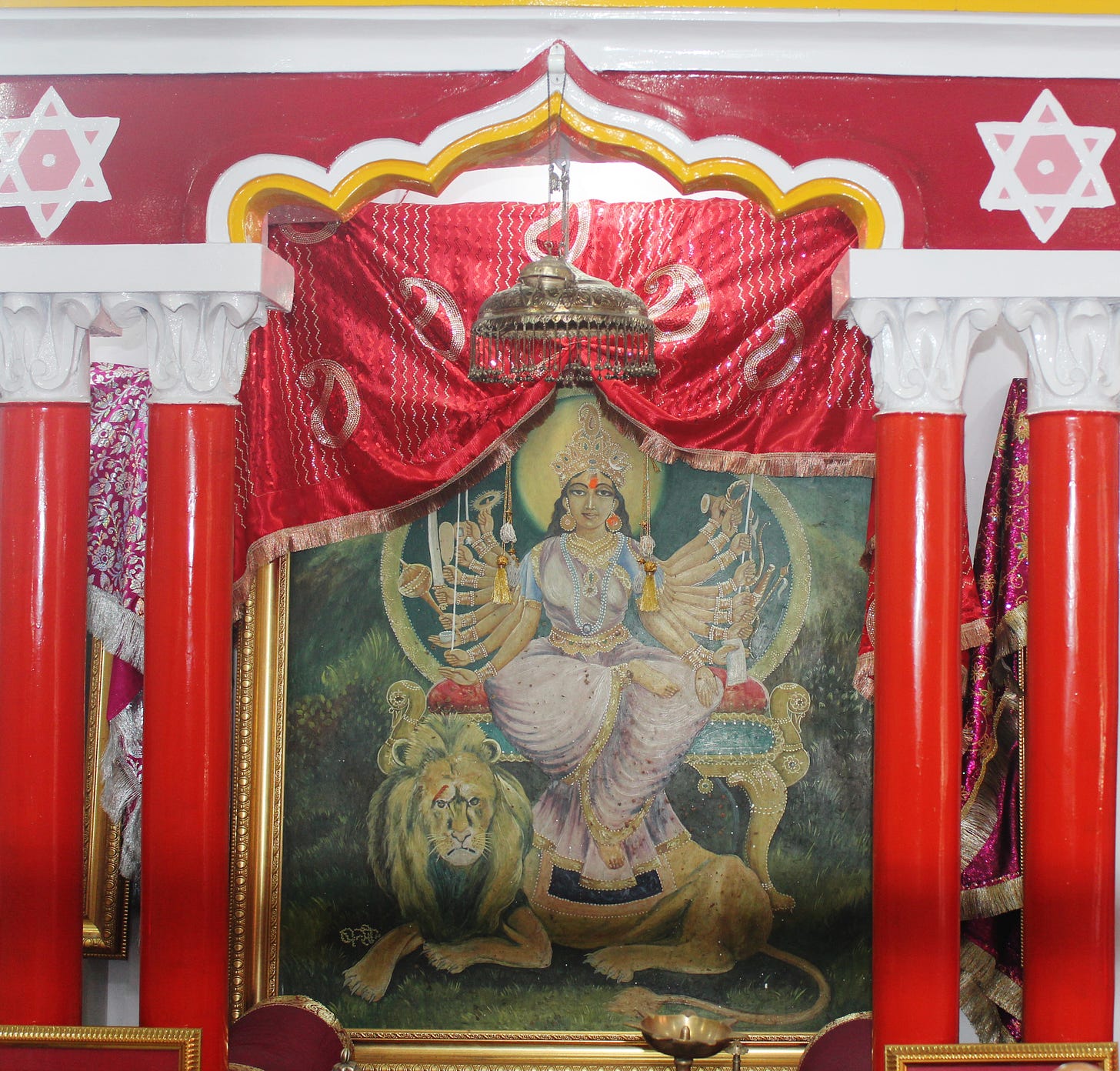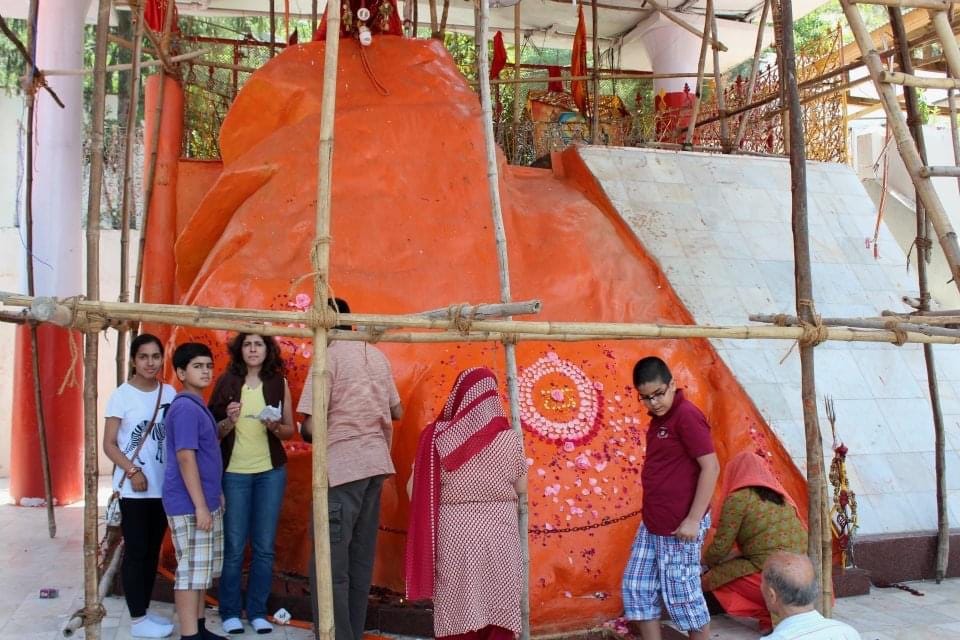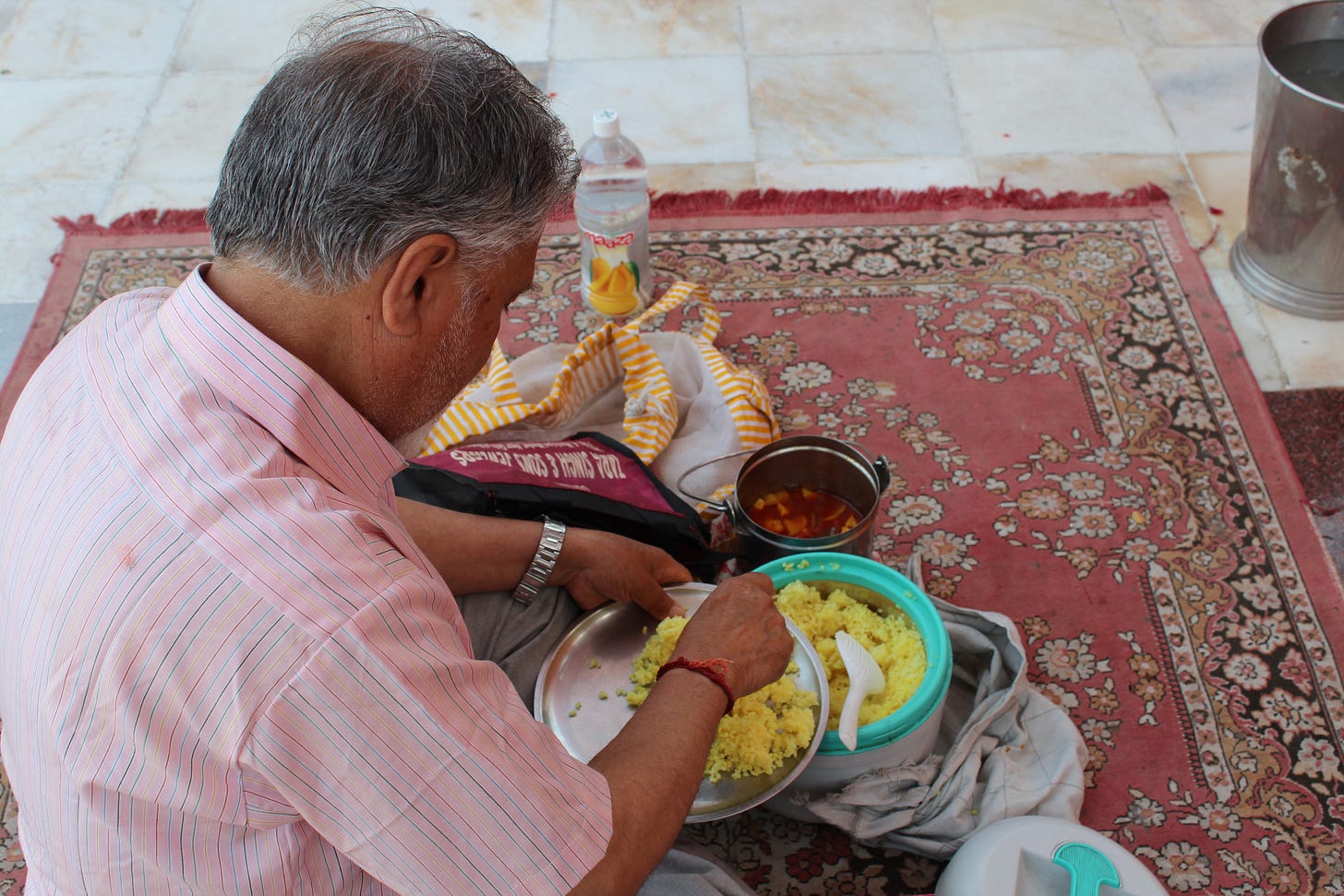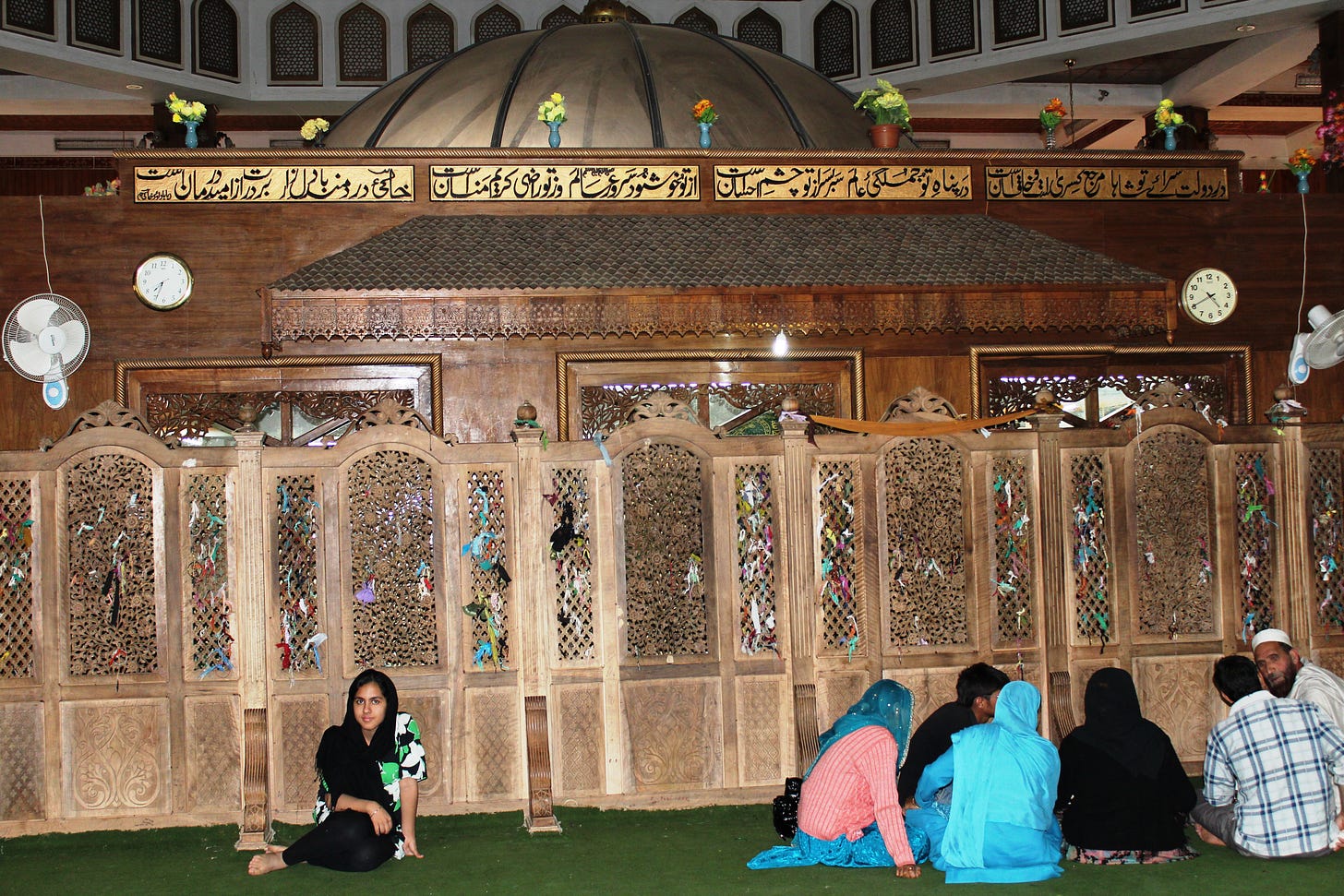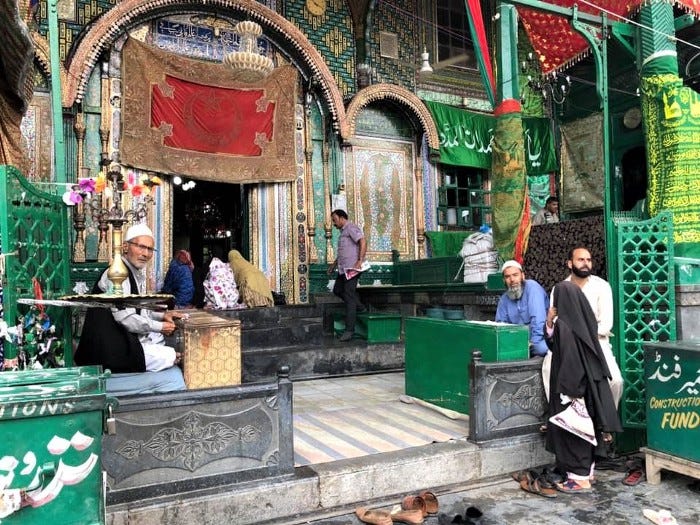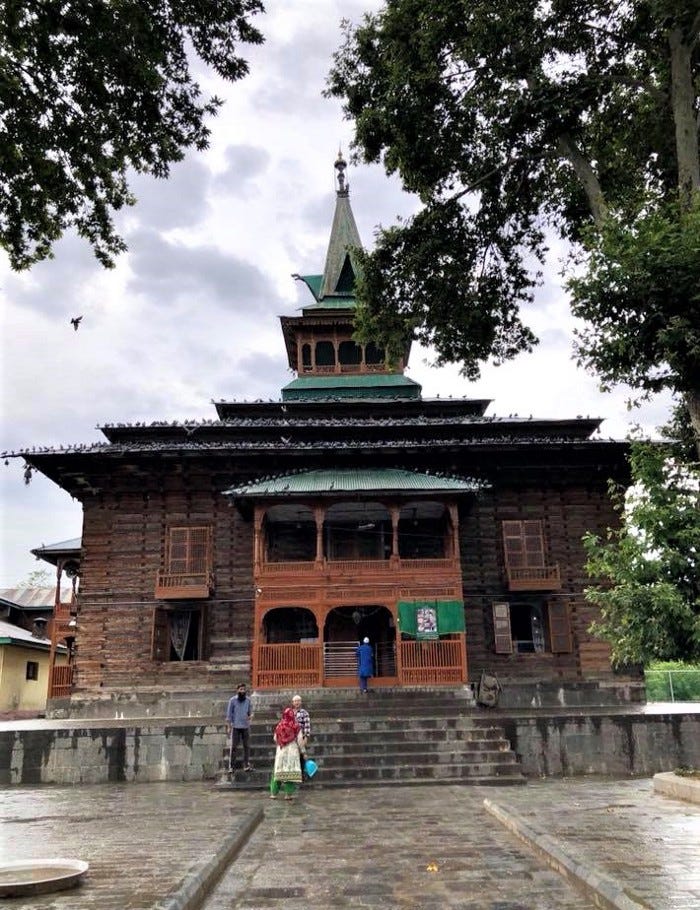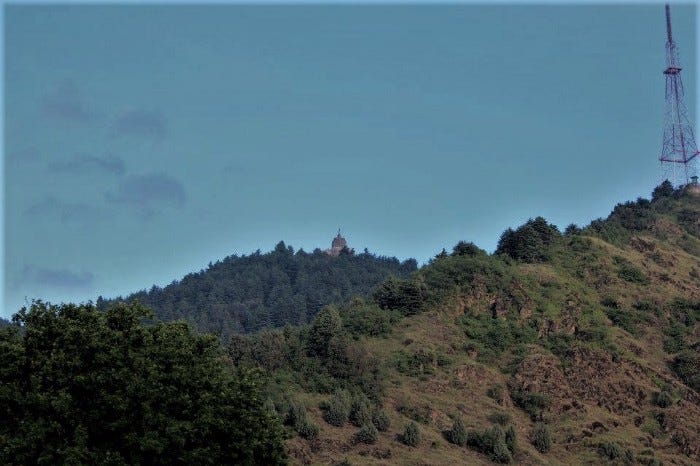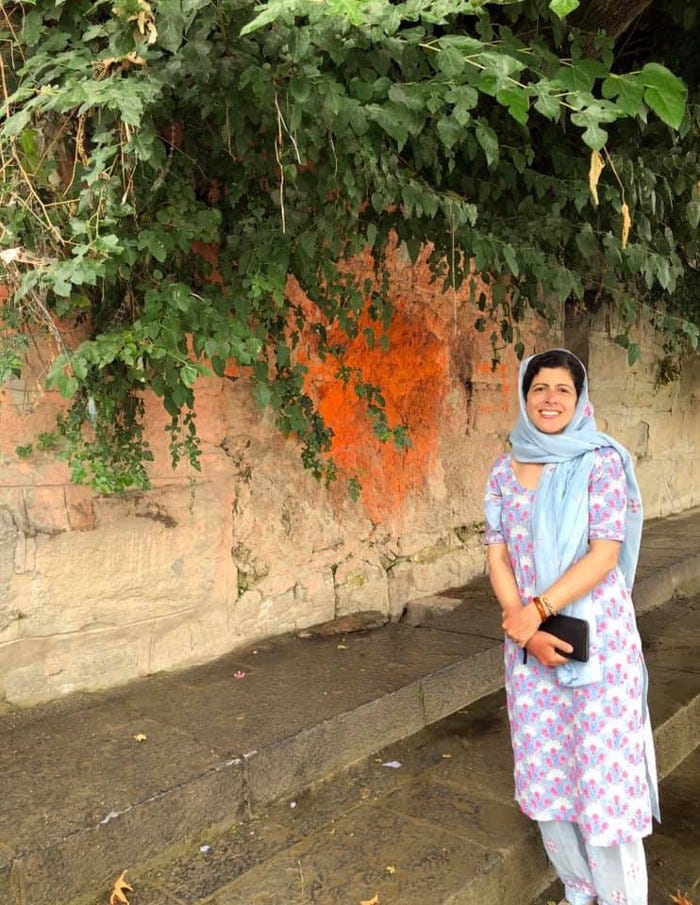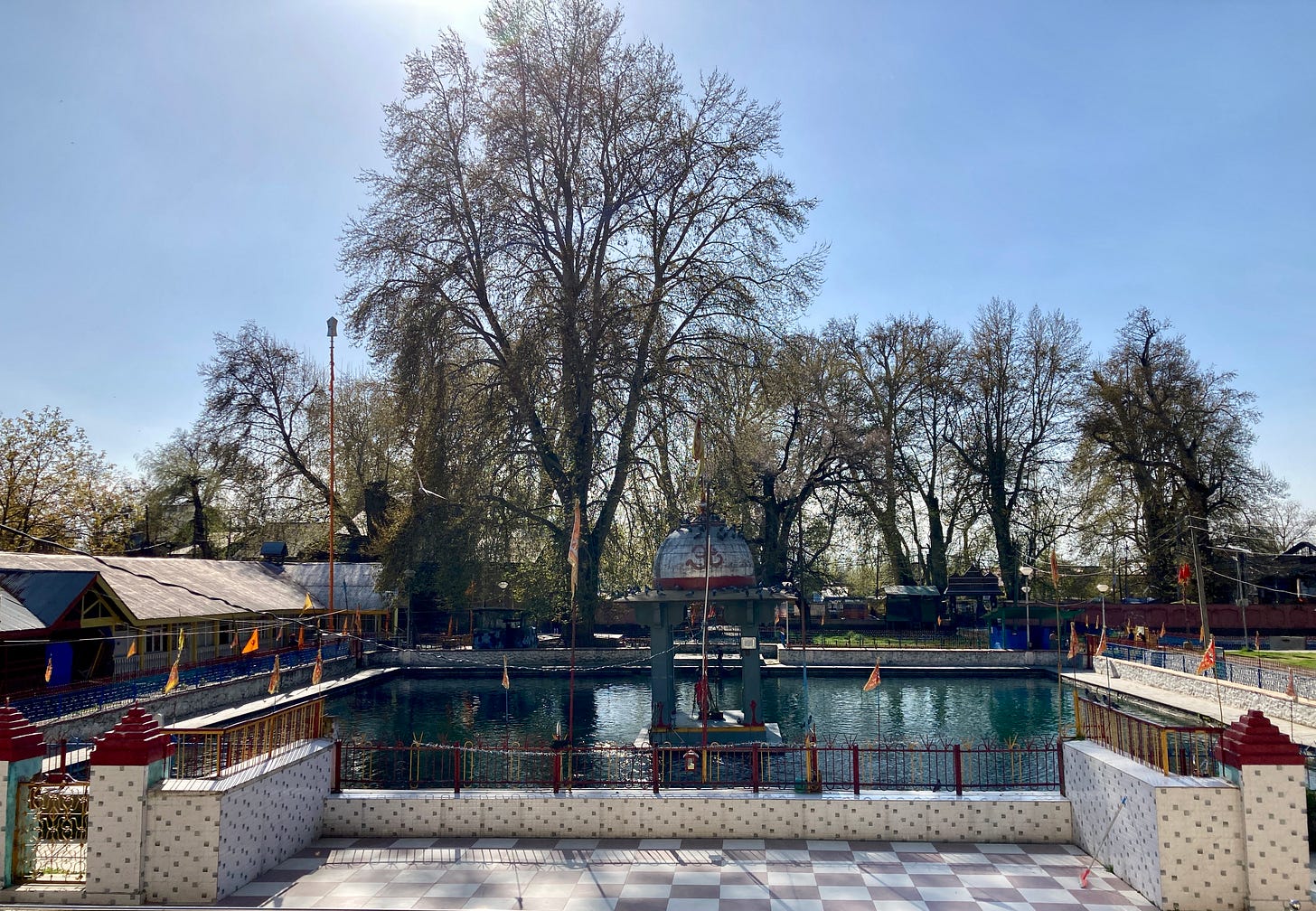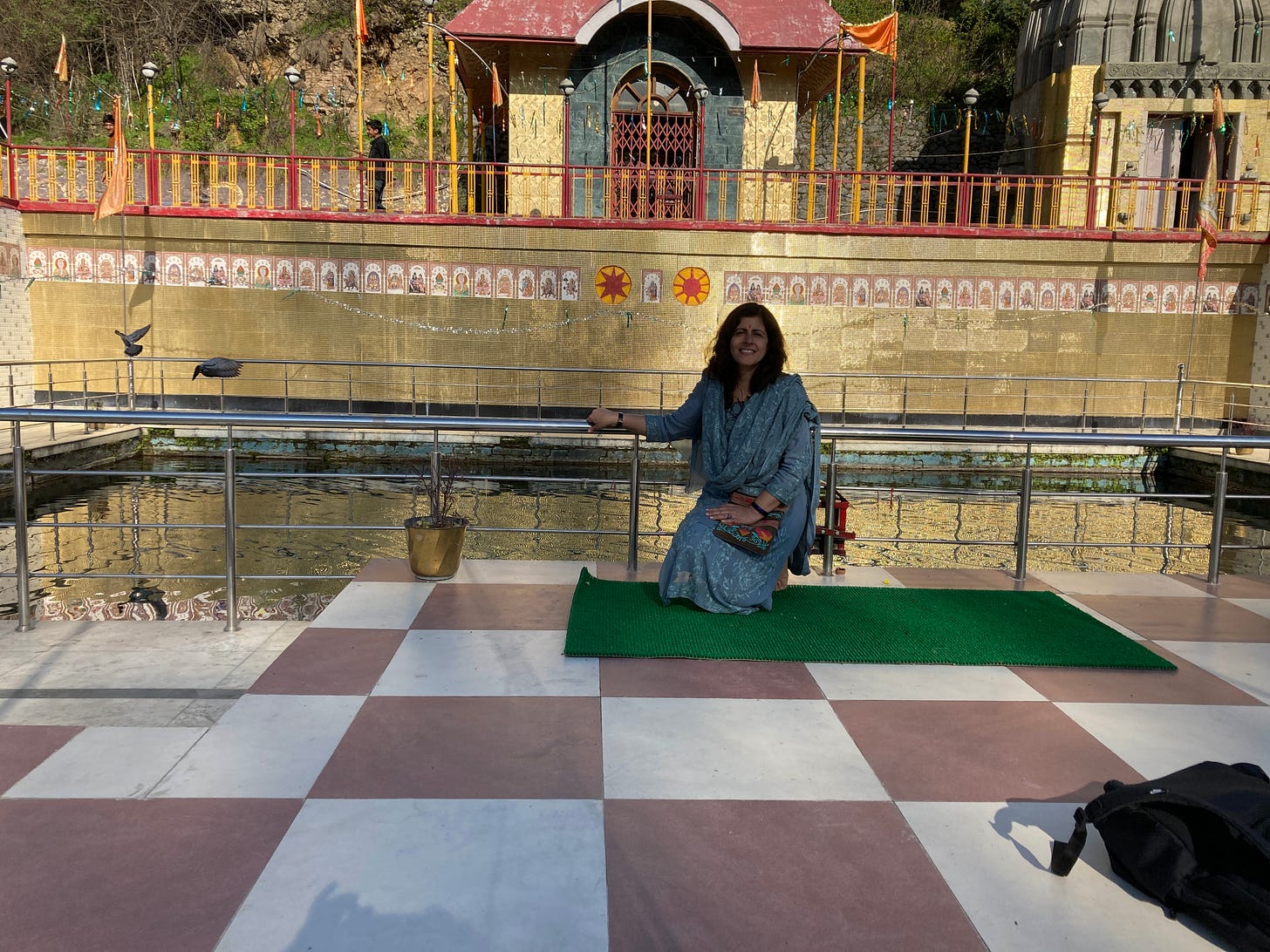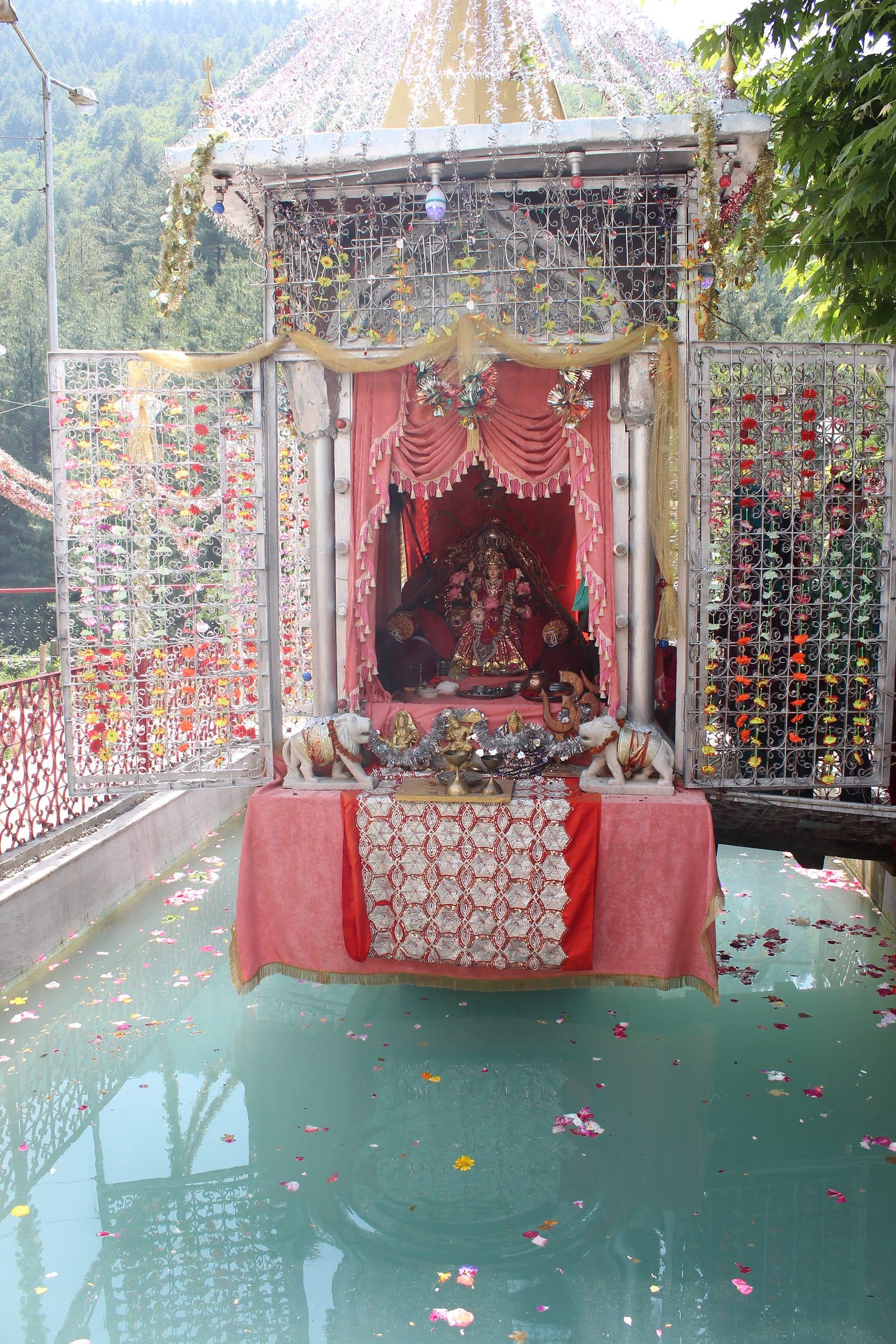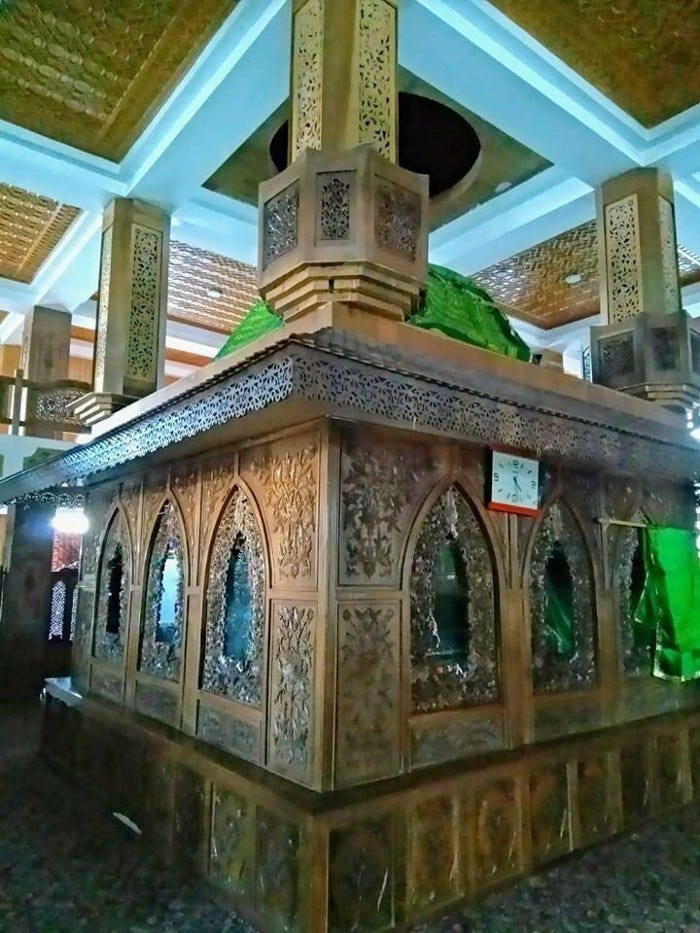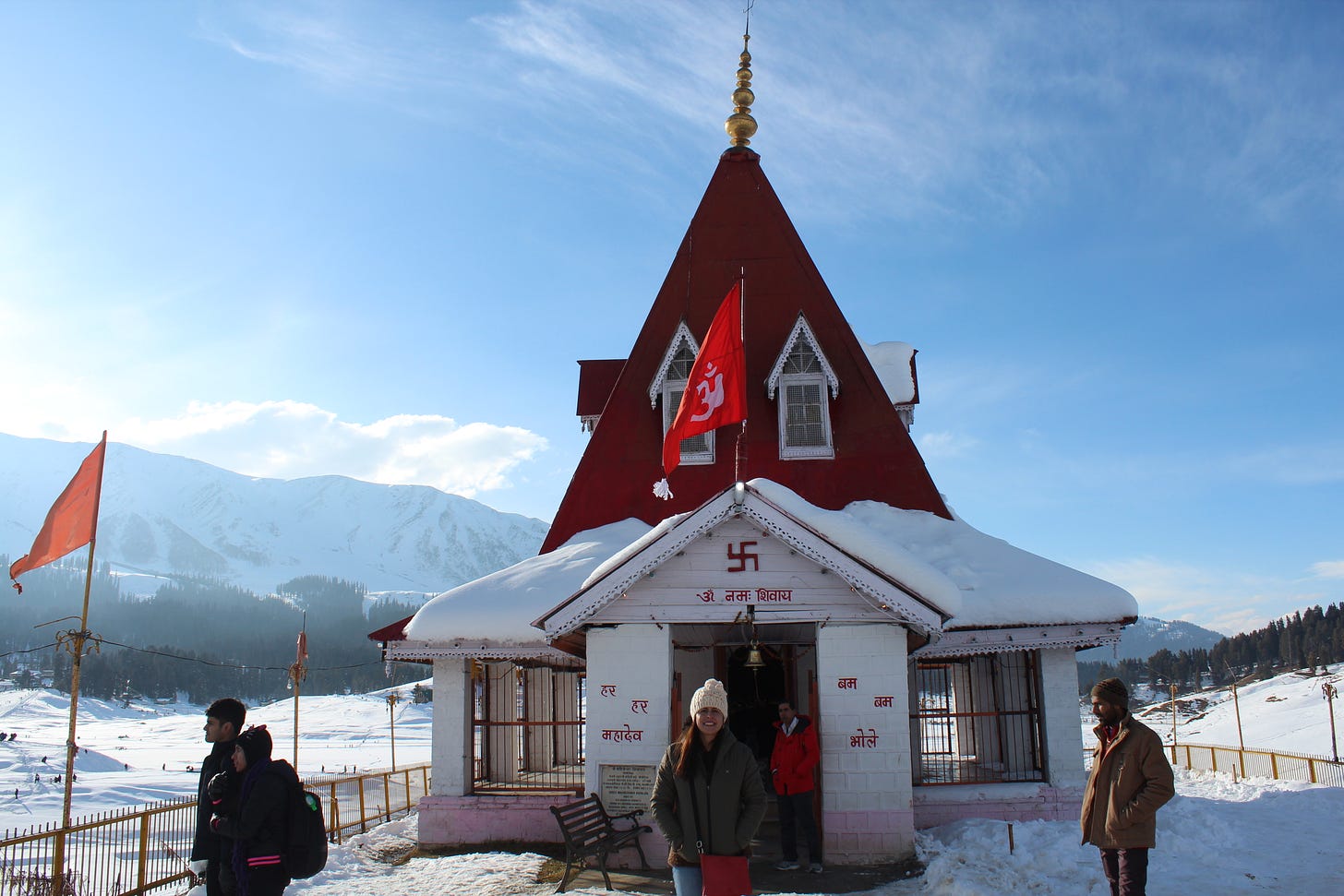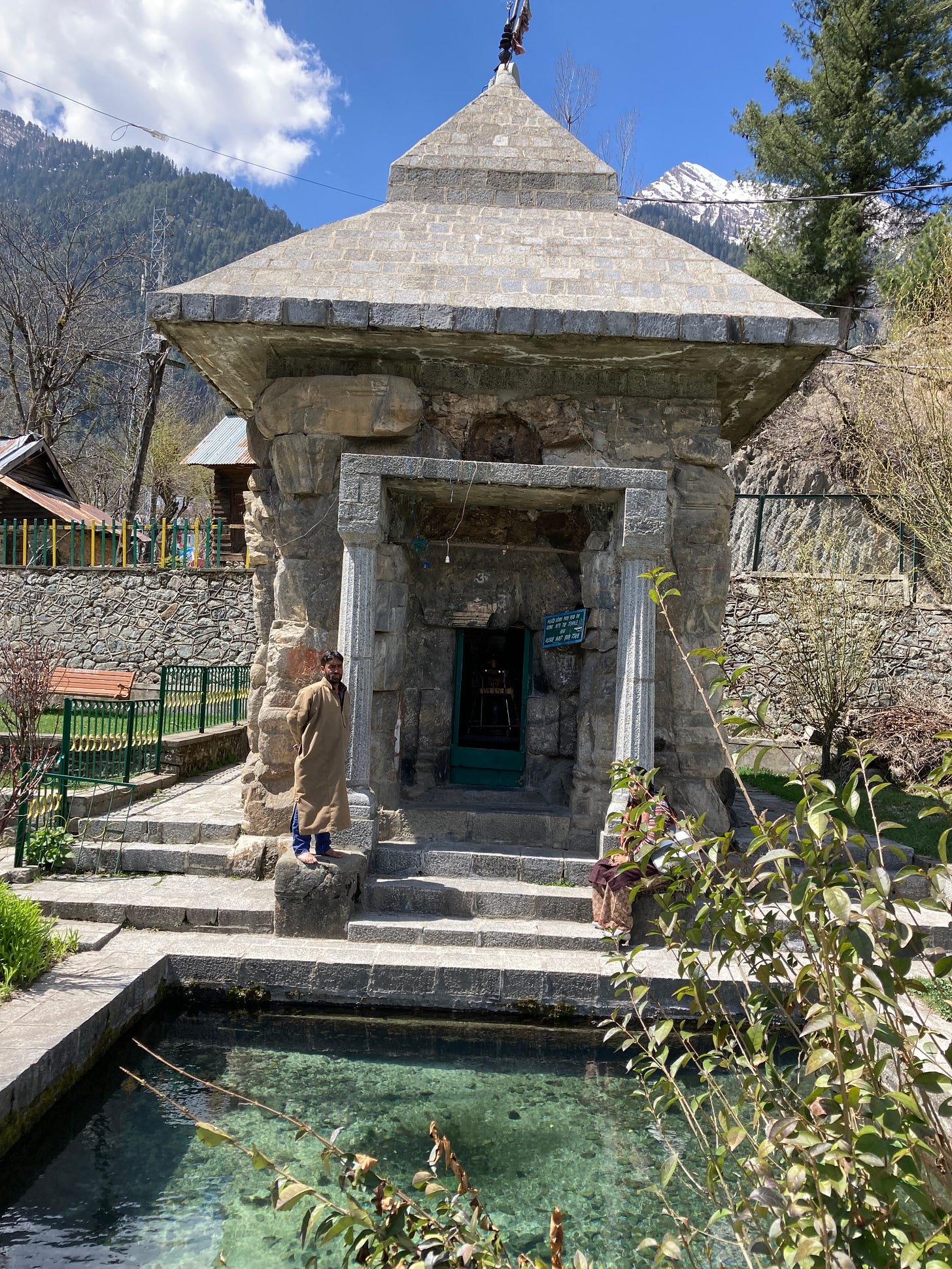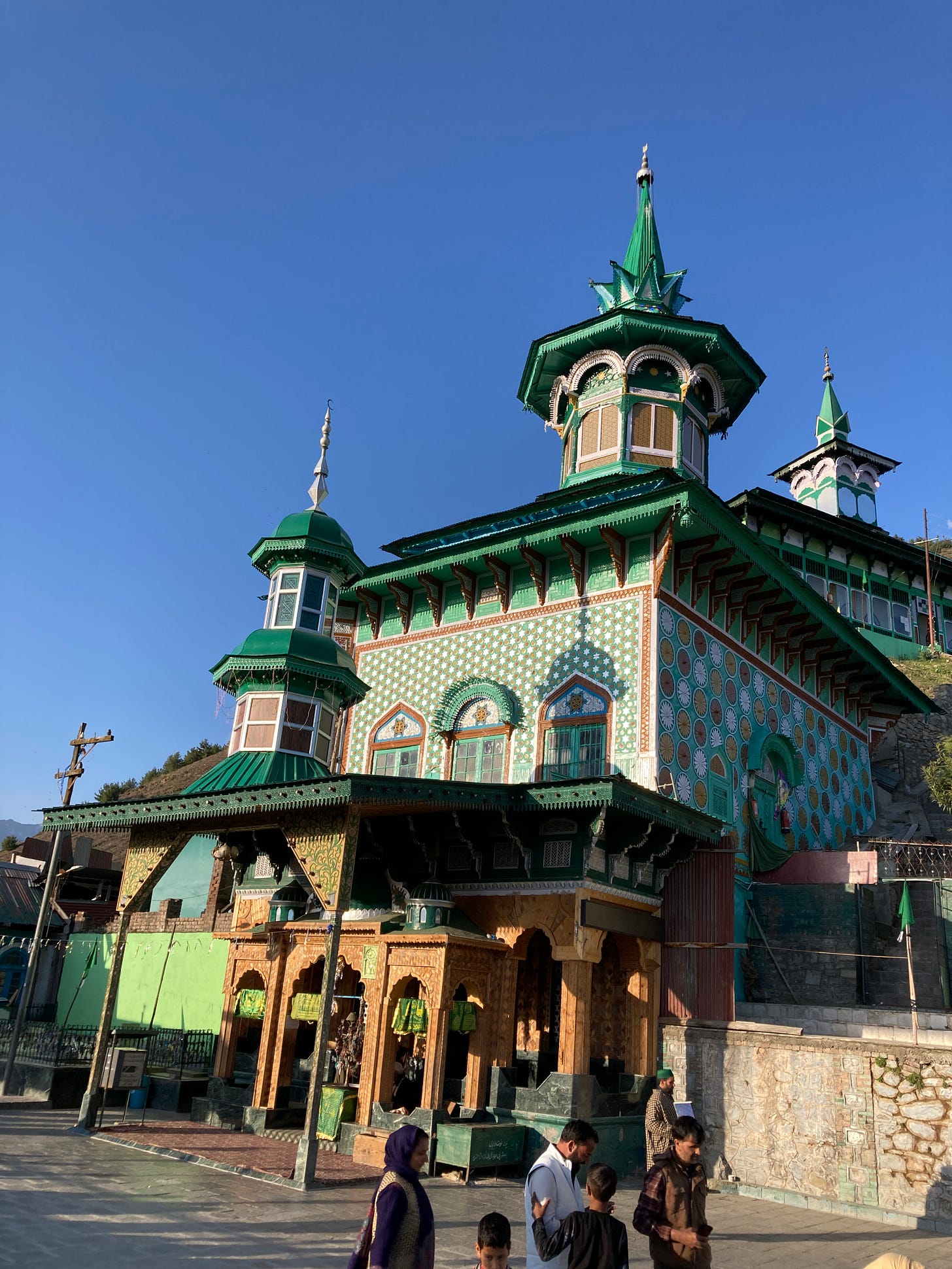Shrines of Kashmir
Kashmir is known for its mountains, lakes, springs and the mystic shrines that are nestled among them. Not many probably know that Kashmir has been a land of spiritualism. For ages, it has been known as Reshé Ver or Peer Ver (Reshé/Peer: a sage or a spiritually enlightened person and Ver: a garden). It’s the land of Saints and Sufis.
Kashmiris share a deep emotional connect with these shrines and every family has one special one that the clan has been paying obeisance to, since hundreds of years. And if you’ve lived in Kashmir, you would’ve sensed how these shrines are practically an extension of your everyday life.
Today, let me take you through a journey of some of these shrines so that, wherever you are, you get to experience some of them.
It is interesting to note that most of the Hindu shrines are based around natural Nags and Sars (springs and lakes respectively). Practically, every prominent Nag or Sar is considered holy and so are the fish in them. Nobody catches the fish — both Muslims and Hindus consider them sacred and just love feeding them!
Similarly, most Muslim shrines have courtyards full of pigeons and people from all faiths feed them grains. Another common sight is the local sweetmeat vendor who has a stall right outside the Ziyarat (shrine), selling Nadir Monje (lotus stem fritters) and other fried breads. Many times you would find women distributing Taher (yellow rice) outside to the devotees visiting. Anyone and everyone most respectfully accepts a handful as a blessing.
Devotees at these shrines often seek blessings and tie threads in the niches there praying for a boon to be granted. It’s called — Dashi Gandin.
Some Sufi shrines like Dastgeer Sahib and Nund Resh are in which both Hindu and Muslim have faith alike. At many Hindu shrines, you would find Muslim vendors outside selling flowers and Naveed (an offering of food) which are offered to the deities. However, there are some Sufi shrines where women cannot enter, they just have to limit themselves to the main door.
Kheer Bhawani
Kheer Bhawani temple is a highly revered Hindu shrine, situated in the Tul Mul village about 22 km from Srinagar. The temple, made of white marble, sits in the middle of a hexagonal sacred Nag, surrounded by a huge number of Chinar trees, which render a very peaceful aura to the place.The water of the Nag is said to change its colour, sending a sign of the time to come. While the hues of pale blue and green are supposed to be a good omen, the colours of red and black are not considered auspicious. Goddess Ragnya — an incarnation of Goddess Durga — is the presiding deity of this shrine. The temple is named after the popular Indian dessert Kheer, which is offered to the Goddess. Though the ancient spring has been there from time immemorial, the Dogra king — Maharaja Pratap Singh built this temple first in 1912.
There are arrangements to stay in the premises. One can book a dharamshala and eat at one of the many food stalls right next to it. Luch’e te Halve (puri-like fried bread and halwa) with Kehwa (green tea) is the most sought after delicacy along with Nadir Monj’e(lotus stem fritters).
Hari Parbat or Parbath
If you have been to Srinagar, the first thing that catches your eye is an imposing fort atop a hill which forms the backdrop of the Dal Lake. Since, this lake is the first thing all tourists usually rush to, it’s hard to miss the Hari Parbat fort, the walls of which were got constructed by the Mughal ruler, Akbar in 1590 and later the fort was built by an Afghan governor in 1808 during the Durrani rule. The fort gives a panoramic view of “Shahar-e-Khaas” or the entire downtown.Popular belief is that Kashmir was once a huge lake wherein resided the demon Jalobhava, who used to terrorize the locals. The inhabitants prayed to Goddess Sharika, an incarnation of Goddess Durga, for help. She is said to have taken the form of a bird Haer (Mynah) and dropped a pebble on the demon’s head. The pebble which magnified in size, and what we call Hari Parbat now, drained all the water out from the lake, crushing the demon instantly!
On the western slope of Parbath, is the shrine of Mata Sharika, which is regarded as the presiding deity of Srinagar by Hindus. The temple has an 18-armed idol of the Devi and a big rock smeared with Synder (vermilion). This temple is regarded as one of the most sacred sites by Kashmiri Pandits. The shrine is thronged with devotees at all times who offer Taher Tsarvan (Taher is rice cooked with turmeric, oil and salt & Tsarvan is liver of sheep cooked in oil and spices) to the goddess.
My oldest memories of this day from childhood are still very fresh in my mind. Baabi — my grandmother, even if she would not be able to go to Parbath on a festival, she would offer huge chunks of raw lamb meat to the kites by flinging them high into the sky from the attic of our home in Srinagar. The kites would majestically swoop down and catch them without amiss! All the kids in the house would watch the spectacle with so much awe!
Tsrar-e-Shareef
Tsrar-e-Shareef is the most revered and loved Sufi Islamic shrine of all Kashmiris. It is situated 30 km from Srinagar in a town called Tsrar which is close to the idyllic meadows of Yusmarg. It is the tomb of Sheikh Noor-ud-din Wali, a Kashmiri Sufi saint, poet and mystic known famously as Nund Rishi. He also goes by the name of Sheikh-ul-Alam and Sahajanand. Both Hindus and Muslims have deep faith in him. It’s important to note that, while some other Sufi saints revered today in Kashmir neither belong to Kashmir nor have they ever visited it, Nund Resh was born here and propagated the Rishi-Sufi order of Islam. That’s why Nund Resh is known as Alamdar-e-Kashmir. The patron saint of Kashmir.
The shrine was built in 1460 and Sultan Zain-ul-Abidin’s is supposed to have laid foundation of the shrine after the saint passed away in 1438.
Nund Rishi was deeply influenced by the Shaivite Hindu mystic Lal Ded as both belonged to the Rishi order of Kashmir. The Rishi Order is a spiritual practice associated with religious harmony which was practised in the Valley. The true syncretic culture or Kashmiriyat was propagated by these Rishis and Sufis.Women are allowed through a dedicated entrance.
Khanqah-e-Moula
Also known as Shah-e-Hamadan shrine, it is one of the oldest and most revered Sufi shrines in Kashmir. Located on the right bank of river Jhelum in downtown Srinagar, it was first built in 1395, by Sultan Sikandar in the memory of the Sufi Islamic preacher Mir Sayyed Ali Hamdani. Shah-e-Hamadan came to Kashmir as a preacher from the city of Hamadan in Persia in the 14th century. He has been the largest influence in the widespread conversion to Islam in Kashmir.
Khanqah is a sanctuary for penance where the Sufis would spend a time of 40 days in deep prayer and meditation.
The shrine is quite imposing with beautiful wooden architecture in the Buddhist, Hindu and Islamic styles. The designs in wood are quite intricate with beautiful Papier Mache adorning the walls.
Women are not allowed inside, only up to the shrine entrance.
Naqshband Sahib
This shrine is named after the popular Sufi saint from Bukhara in Uzbekistan, Syed Baha-ud-Din Naqshband the founder of a Naqshbandi Sufi order. The mystic never visited Kashmir but his followers made a shrine in his name. In this Khankah, one of his descendants, Mohi-u-din, lies buried in a mausoleum.The architecture of this wooden shrine particularly stands out as it has some fine panels done in the pinjra-kari style.
Women are not allowed inside.
Shankracharya
Shankaracharya hill is the centre of Srinagar, figuratively and almost literally too. It is a part of the Zabarwan range. In ancient times, it went by the name of Gopadari Hill.
The stone temple is dedicated to Lord Shiva and is right at the peak of this hill, at a height of 1000 ft, overlooking the city of Srinagar. From the top you can see the entire city with the river Jhelum meandering through.
Kashmir is the seat of Shaivism, therefore, this very ancient temple holds a very special in the hearts of all. There are different backgrounds attached to the temple. Many believe that the temple is from 200 BC although the present structure is probably from 9th century AD. The seer, Adi Shankara visited the temple and that’s how the temple got the name Shankaracharya.
The earliest historical reference has been made by Kalhana, the great Kashmiri poet and historian. He called the mountain Gopadri. Kalhana mentions that King Gopaditya built the temple as a shrine to Jyesthesvara (Shiva Jyestharuda) around 371 BC.
The Doordarshan TV tower also stands on this hill!
Kali Mandir
One cannot not talk about Khanqah-e- Moula and miss one of the oldest Hindu shrines dedicated to Goddess Kali adjacent to it. It shares a common wall with the Sufi shrine and overlooks the river Jhelum as it sits right on the banks of it. Most of this shrine which is also supposed to be around a sacred spring, is now under the earth. But the belief of the people is still very strong and faithful come and pray at the steps of Kali Ma! The shrine consists of a wall with a huge round figure made of vermilion on it.
The only time I have visited it was in the summer of 2018. It had been pouring from the heavens since morning. The raindrops splashing on my face, the steps of stone awash and Vyeth (River Jhelum) flowing furiously in the front. It was a moment to reckon with.
Nagbal Mattan Nag
Most of the people would have heard of Anantnag in South Kashmir. Anant means numerous and Nag means spring in Kashmiri. Thus, Anantnag means endless springs! There are so many springs in Anantnag, some of them being Nagbal, Devibal, Salak Nag, Kokernag, Achhabal, Verinag, Mattan Nag, Malik Nag and many more.
Mattan shrine is dedicated to Surya Dev.
The entire shrine is surrounded by huge Chinar trees which must be hundreds of years old.The blue-green water of the Nag is full of fish of different hues, which are considered very sacred. In fact, most holy springs and lakes have fish in them which are never killed or eaten. There’s a folklore about this spring which says that there exists a fish in this spring, which wears a gold nose ring. Only the lucky ones get to spot it. And the one who does, is truly blessed by God!
Dastgeer Sahib
Ya Peer Dastgeer! This is the cry you often hear from faithfuls of Dasgeer Saeb!
The 200-year-old Sufi shrine in downtown Sringar is of Syed Abdul Qadir Jeelani, the patron saint of Kurds. The Sufi saint never visited Kashmir but people of all faiths there revere him a lot.
It is said that an Afghan traveller on a visit to Kashmir presented the then Afghan governor of the state, Sardar Abdullah Khan, with a holy relic belonging to the renowned Sufi saint. That’s when the shrine was built in its honour. It was initially built in 1806 in a locality called Khanyar. The wooden shrine boasted of the finely carved traditional Kashmiri Khatamband ceilings.
Unfortunately, the shrine got burnt down in fires twice, however, an equally magnificent structure still stands at the same place. And the relic is well preserved there.
Dastgeer Sahib is also called Kahnavi (one with eleven names). And that’s the name I have always heard my folks take in reverence of the saint. People often say “Kahnaviyas path” or “Kahnaviyin Kah” while invoking the saint’s name for sounding truthful.
Zyeethyaer
It is a shrine dedicated to Zeestha (Jyeshtha) Devi in Srinagar, at the foothills of Zabarwan mountain range. Set amidst a cross-section of Shankaracharya mountain and Zabarvan, it overlooks the famous Dal Lake. It is quite close to local spots of tourist attraction like Pari Mahal and Chashma Shahi.
The approach to the temple is through a high security area which houses many VVIPs.
Pokhribal
Pokhribal is a place just below the Hari Parbat and close to Nagin Lake. It is a famous place of pilgrimage since ancient times. Pokhri means spring and Bal a place - the place of springs.
The temple is at the centre of a rectangular spring surrounded by many Chinar trees. The water from the spring flows out to join the waters of the lake. An ancient Shiva temple stands overlooking the holy Amrit Kund. The most prominent decorative features of the temple are the carved eaves board and the carved wooden balustrades.
Baba Reshi
Situated at an altitude of about 7,000 feet, near Ramboh village near Gulmarg, the shrine of the Baba Reshi is the tomb of the Sufi saint Baba Payam Uddin. Built-in 1480, in Mughal & Persian style, this shrine and its surrounding garden is a popular destination for pilgrims from across Kashmir.
Baba Payam Uddin was a courtier of Sultan Zain-ul-Abidin , who later gave up all his worldly belongings in order to serve the common people. He lived and meditated at this location, which became the site of his tomb and a shrine.
This shrine has a big minaret and inside the shrine is the Noor Khwan where the grave of the Sufi saint lies. The Noor Khwan is made of glass and wood carvings.
Rani Mandir
This shrine of Shiva is in the town of Gulmarg, perched atop a tiny hillock. It was built by the Dogra ruler, Maharaja Hari Singh in early 20th century. His better half Maharani Mohini Bai Sisodia was an ardent believer in Lord Shiva and used to offer prayers here.
Many Bollywood movies have been shot in the surroundings and it’s highly reminiscent of the song “Jai Jai Shiv Shankar, Kaanta Lage Na Kankar” which was shot at Shankracharya temple and partly here.
Mamal or Mamleshwar Temple
It is an ancient Shiva temple next to River Lidder, nestled among the mountain ranges of Zanskar and Pir Panjal, in Pahalgam. It was made by King Jayasimha in 400 AD. The shrine's made of stone with a double-headed Nandi. Ganesha was appointed by Shiva as Dwar Pal here, so the name ‘mam mal’ which means ‘don't go'!
It’s probably the oldest and smallest of all shrines in Kashmir with an area of 8 square ft!
Aishmuqam
Aishmuqam Sufi Shrine near Pahalgam was built in the 15th CE,in honour of the Sufi saint, Shiekh Zain-ud-din, one of the chief disciples of Nund Reshi Noor-ud-din. It’s inside a deep cave on top of a hill where the saint preached. He is among the founder saints of the Rishi order in Kashmir.
This can be done together with other shrines in Anantnag district.
Tips for travellers :
There are no organised tours for visiting these shrines. You need to plan on your own. All shrines in the downtown can be planned on a single day and those in South Kashmir can be done separately. Pahalgam can be a good base location for those.
· There are no tickets to be bought anywhere
· Dress modestly and cover your head especially for the Sufi shrines
· Best time to visit is summer
· Photography is allowed except at Shankracharya temple
· Nearest airport is Srinagar and most convenient railhead Jammu Tawi
For any other query, you may write to me at namrata.wakhloo@gmail.com



